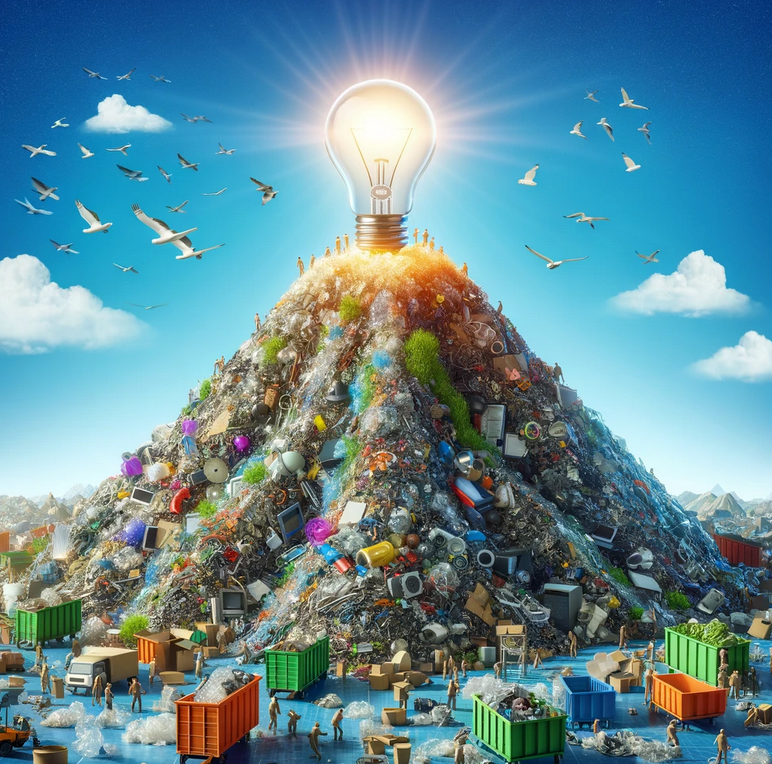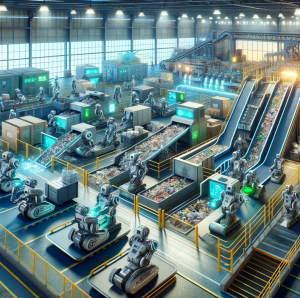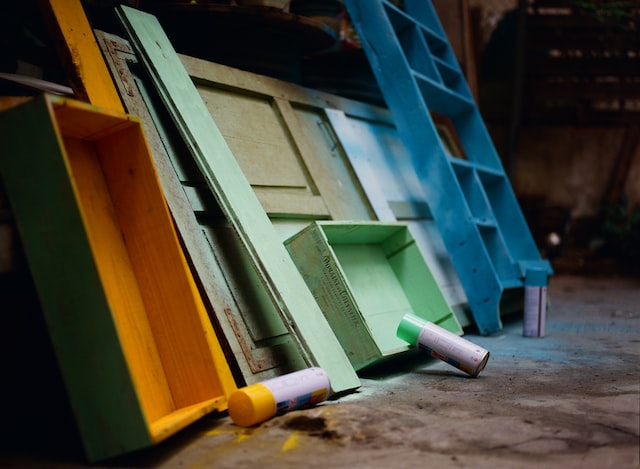Why waste recycling and reuse may represent a valuable entrepreneurial opportunity…

GUEST POST from John Bessant
One of our family traditions at this time of year is the big clear-up. There’s a time limit on our tolerance for the accumulated junk, the temporary displacement of furniture to make space for Christmas trees, decorations, cards and mountains of discarded wrapping paper, piles of new toys and other festive fripperies. At a certain point (Twelfth Night, good of them to mark it on the calendar) some kind of alarm switch trips and it’s a case of loading up the car to transport the rubbish to the refuse tip. Where, we quickly discover, we are not alone — everyone else has had the same idea. Cue long wait in queue.
When I teach about searching for innovation opportunities one of the great tools to introduce is ‘find a queue’. It builds on a well-established principle of lean thinking — most times the presence of a queue means that value isn’t being added somewhere. Something or someone is being forced to wait for something to happen and that’s a waste of time, space, energy, etc. . So there’s an opportunity to think about how to change the process — to innovate to smooth out the bottleneck. Find a queue do a process map and begin the improvement journey.
So sitting in a queue for the refuse tip started me thinking on the innovation opportunities so much accumulated waste might have to offer. And whilst it might be possible to improve the ways and speed with which families can be separated from their rubbish the real benefits are buried a little deeper.

In fact it’s worth referring back to a well-known piece of Yorkshire wisdom, ‘where there’s muck, there’s brass’. Waste needn’t be a problem to be hidden away — buried or burnt to get rid of it. Instead there are real opportunities in waste — as plenty of innovators have already found out. Think for example of Earl Tupper whose efforts to turn the black sludge emerging from 1940s oil refineries paid off when he created the bright shiny plastic kitchenware which bears his name.
Or Charles Goodyear who managed to improve the unpromising raw material of rubber with its tendency to become sticky and brittle into something elastic and flexible through the vulcanization process he literally cooked up in his kitchen sink.
Or Henry Ford who developed a plastic made from soybeans and used it to make car parts, demonstrating an early example of using agricultural waste to create valuable products.
It’s still happening — take the case of Terracycle, founded in 2001 by Tom Szaky as a business specialized in recycling and up-cycling various waste materials. Envar is a UK company which recycles coffee grounds into bio-fuel. An approach which has been deployed elsewhere; Virgin Atlantic picked up some helpful publicity and valuable learning when it flew an airliner from London to New York on November 28th last year on a diet of 100% bio-fuel, essentially derived from waste cooking oil.
In doing so they scored a notable PR bonus, being the first of many airlines seen to be doing something to help reduce their climate impact. Adidas has done something similar for the fashion industry; their partnership with Parley for the Oceans creates shoes and apparel from ocean plastic waste. And Nike, not to be left out, has been running its Grind program since the 1990s turning waste from shoe manufacturing into surfaces for sports facilities, turning manufacturing waste into valuable products.
In fact there’s growing interest in using waste as a feedstock for further use — through recycling or re-using in different forms. Waste tips are increasingly seen not as dumps but as mines, full of valuable resources which can be dug out. It’s a useful analogy.
Think of gold mining and the traditional picture is something like a hot and cramped shaft a mile below Johannesburg’s city streets. The results of long sweated hours are brought to the surface and end up mostly as huge piles of rock which are painstakingly separated to yield a few grams of gold. That’s not so far from what is now becoming commercially interesting — digging deep into waste heaps to extract and concentrate small flecks of gold (or many other valuable minerals) from the piles of discarded electrical goods.
When I took a tour of my local waste processing facility recently (I have so much fun in my holidays) I had a growing sense of déjà vu — where had I seen something like this before? Separating out an unpromising feedstock of unpleasant smelling raw material into different parts which could be further refined to produce something of value? Then it struck me — an oil refinery. The processes might be different — think physical separation instead of fractional distillation — but the underlying story is the same. Identify the value in different streams, find clients who will pay for it and manage the business accordingly.
It’s a profitable business — so much so that councils and local authorities are increasingly selling the licenses to process waste. Recent reports suggest profit margins at between 30 and 60% which suggest that it’s worth taking a close look. The global recycling industry is worth about $410 billion and is forecast to grow at over 5% per year, at least for the next 7–10 years. A 2023 McKinsey report offers an optimistic scenario for plastics recycling, for example, suggesting a future in which 50 percent of plastics worldwide could be reused or recycled by 2030. Following that path, plastics reuse and recycling could generate profit-pool growth of as much as $60 billion for the petrochemicals and plastics sector, representing nearly two-thirds of its possible profit-pool growth over the period.
It may not be so easy as waving a magic wand, though. There is widespread concern that plastics recycling is much more difficult to achieve because of the challenge of separation — most plastic waste is mixed and contaminated. But whilst manual separation may be cheap it is rapidly being supplanted by a new generation of smart sensors and actuators. CES 2024 might have some glamorous consumer products and plenty of AI on the front stage but behind the scenes there’s huge improvements in the sensor and actuator field which could drive the cost of separation down whilst improving its efficiency.

And it’s not just economic pressure in the marketplace. Increasingly regulation is pushing for higher rates of recycling and for manufacturers to take responsibility for their products over the whole life cycle. Which is promoting some ambitious innovation in recycling. Henry Ford’s ghost might enjoy a trip to the southwest of England where the Charles Trent scrapyard in the town of Poole has quietly reinvented itself as one of Europe’s most advanced ‘de-production’ facilities.
It has cost over £10m and looks at first sight like a car assembly plant — except that this one is focused on disassembly. Whole cars go in at one end and their skeletal remnants emerge at the other. Around 96.3% is reused or recycled by weight — above the 95% legal target and the UK average of 93% or less. Part of what makes the model work is the emphasis on separating out the valuable but harder to get at elements rather than simply recycling the steel for scrap.
On a typical day 120 cars arrive on trucks from all around the area and engineers crawl over them attaching bar codes which identify key valuable items. It’s a high-tech operation. Robot arms lift items clear so that humans can get in with cutting torches, bar codes label and track everything.The wheels, batteries and tyres are the first to be removed — many can be refurbished and resold, others can go to a specialist recycling facility. Fluids are drained off- fuel, oil even water — and are used in the company’s own vehicles. And then the carcass is hoisted on to a disassembly line where it visits four stations; at each one the bar codes are scanned to identify what has to be done and instructions for how to deal with different parts. It’s got a lot in common with Ford’s old lines — the same race to complete tasks against the clock, for example, 15 minutes being allocated for each set of instructions. The stations are specialized; number 1 deals with doors, panels and interiors, 2 handles lights and dashboards, 3 is moving parts like engines, gearboxes, axles and cat converters ad the last stage is electricals. Engine blocks are washed, labelled and assessed for re-usability — or stripped down for parts. What’s left after all this is to crush the rest into a metal bale and send to scrap recycler. The whole process takes about 60 minutes and handles 75 cars/day
A key element in the process is the downstream platform where parts can be sold online; eBay has become the UK’s largest retailer of car parts and preferred not least because it offers guarantees of provenance and quality. It has grown as a marketplace partly because since the Brexit split from the EU spare parts are scarce. Prices have risen and consumers and repairers are prepared to pay and use recycled ones, especially with a guarantee. The approach is not only greener but also up to 70% cheaper!
Innovation is continuing to help develop the process further; as the CEO comments ‘within the next couple of years our target will be to close that recycling loop to nearly 100%…this is the future of car recycling’.
So innovation in processes is a key — but so too is innovation in the underlying ways in which we frame business opportunity. Business model innovation. Current concerns around the availability and complex geopolitics of key raw materials is promoting a rethink and a re-evaluation of opportunities. Key minerals like lithium and cobalt are going to be critical and the search for alternative sources of supply comes into the equation. How about re-mining as one route forward?
In another recent article in New Scientist Graham Lawton reports on thinking — and the technology development behind it — around revisiting coal waste as a source of key valuable materials. A recent webinar hosted by the US National Academies of Sciences, Engineering and Medicine explored some fascinating options which revalue the thousands of sites of old coal mines which are littered with unsightly waste heaps. There’s a lot of collateral waste associated with coal mines — slag heaps, ash ponds and so on do not make for green and pleasant landscapes. These are mostly the consequence of burning coal — but they may represent a rich source of opportunity. Burning coal concentrates residual chemicals in the rock and those residuals include some of the most sought after minerals in today’s world. Lithium is close to the top of the list, essential for our current electromobility revolution and the batteries which will drive it. But there are other members of the so-called ‘dynamic dozen’ of key strategic materials present on slag heaps. Estimates suggest US coal waste alone contains around 288,000 tonnes of the stuff, enough to supply the US market for 130 years. Plus it also contains other high value minerals like cobalt (think mobile phones), platinum, iridium, gallium and germanium (semiconductors anyone?)
Rethinking waste in this way takes not only money but the classic entrepreneurial skill of reframing — of seeing what others don’t see. At its core, the Trash-to-Cash business model is all about re-imagining waste as a valuable resource. It requires an open mindset but also a long-term vision; the changes which might make such a business model viable may take time to materialize. But somewhere in that future of uncertainty about resource availability, concern for pollution and an increasingly strong regulatory framework lie the seeds of significant opportunity.
There’s also a need to think big and recognize that this kind of change may require a rethink at systems level. Much of the circular economy argument hinges around this theme of bringing together different players to create something viable which has emergent properties — the whole is greater than the sum of the parts.
Sustainability led innovation is easy and obvious — up to a point. Only a very short-sighted organization would fail to try to do what it does better — saving energy, reducing carbon footprint, etc. — it’s a no brainer. And there’s scope for the visionaries who see that this might be a route to new products and services, a way of creating a company or of renewing and transforming an existing one. The role model of Ray Anderson who took Interface Flooring from a small carpets company to being a major player in the industry through committing wholeheartedly to the sustainability vision is a powerful one.
The big challenge in sustainability-led innovation is working at the system level, assembling and aligning multiple players into a coherent ecosystem. And that takes a lot of entrepreneurial vision, re-framing and dogged perseverance! But the prize may be worth it; in earlier centuries alchemists were seen as the somewhat lunatic fringe with their attempts to transmute base material into gold. With today’s technological, political and economic environment we may be closer to reaching that goal. To paraphrase a classic one-liner from the Hollywood depictions of the Gold Rush — ‘there’s gold in them thar hills….!’ could become ‘there’s gold in them thar landfills….!’

You can find my podcast here and my videos here
And if you’d like to learn with me take a look at my online course here
Image credits: Dall-E via Bing, John Bessant
 Sign up here to join 17,000+ leaders getting Human-Centered Change & Innovation Weekly delivered to their inbox every week.
Sign up here to join 17,000+ leaders getting Human-Centered Change & Innovation Weekly delivered to their inbox every week.
 Drum roll please…
Drum roll please…![]() Sign up here to get Human-Centered Change & Innovation Weekly delivered to your inbox every week.
Sign up here to get Human-Centered Change & Innovation Weekly delivered to your inbox every week.



